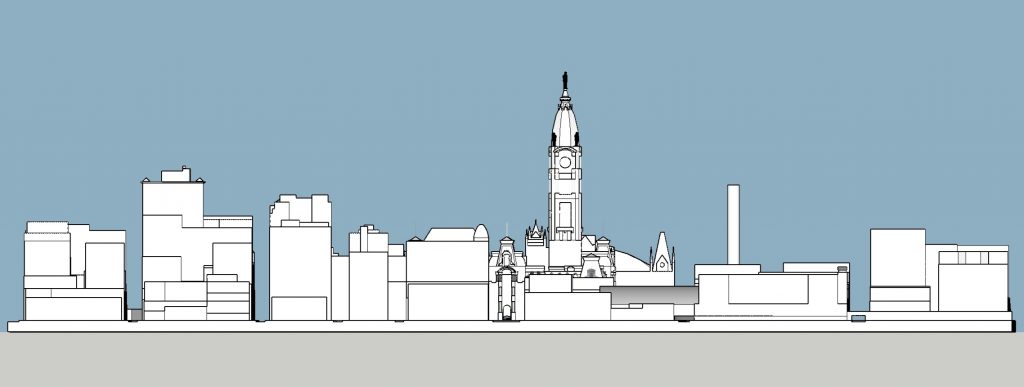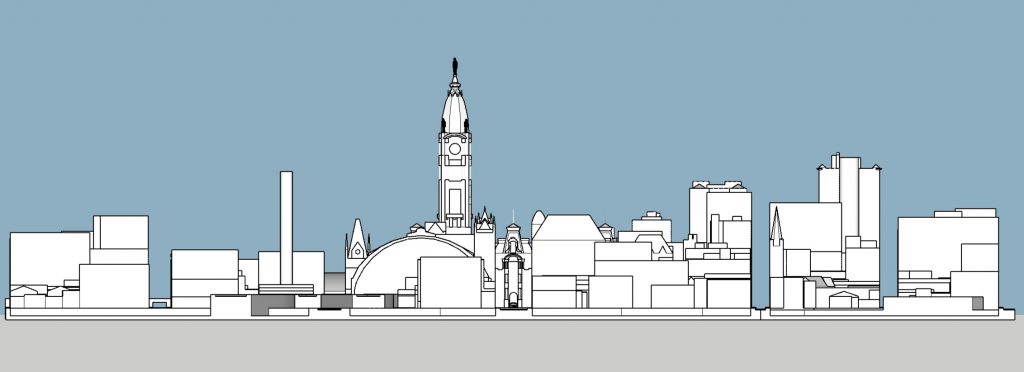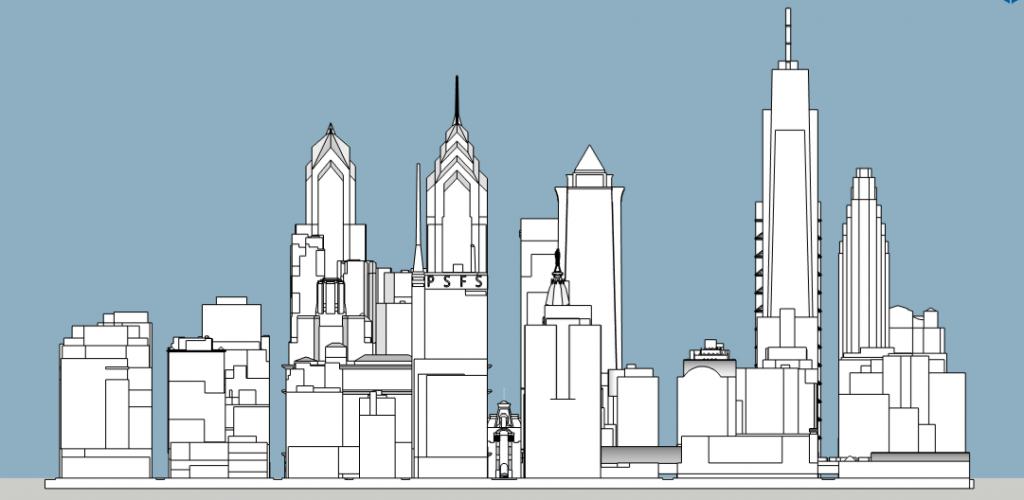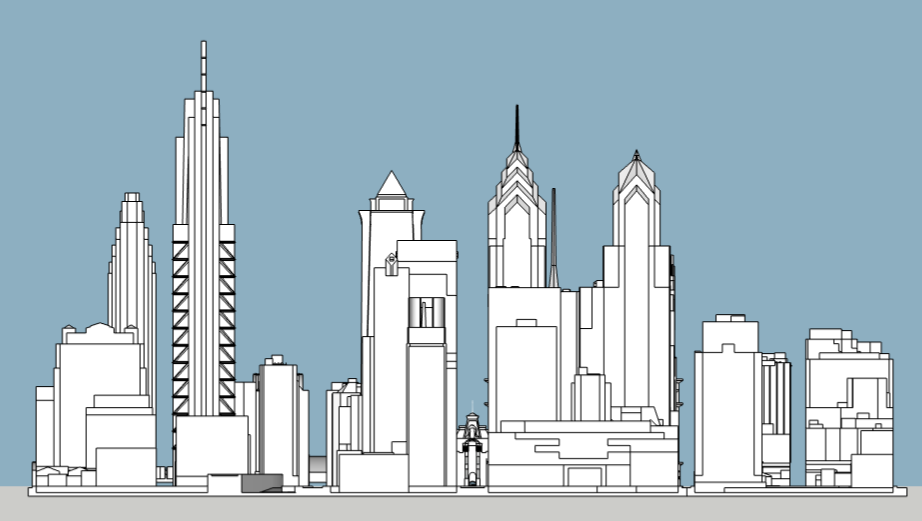The Philadelphia skyline itself had started in the heart of the city, with the Christ Church in Old City standing as the tallest structure in the city during the Revolutionary era. Though some tall structures have risen at an early date, such as the 143 foot tall Sparks Shot Tower at 129-131 Carpenter Street, which was in operation from 1808 to 1903, the skyline has dramatically transformed in the 1900s. Today Philadelphia YIMBY compares the skylines of 1905 and 2020 via massing renderings.

Philadelphia 1905 east elevation. Photo by Thomas Koloski

Philadelphia 1905 south elevation. Photo by Thomas Koloski

Philadelphia 1905 west elevation. Photo by Thomas Koloski

Philadelphia 1905 north elevation. Photo by Thomas Koloski
The start of the century went great for the Philadelphia skyline, when it received a shockingly tall skyscraper for its time. Philadelphia City Hall stood as the tallest occupied structure on Earth at a height of 548 feet, a title it held between 1894 and 1908. The building was passed by the Singer Building in Lower Manhattan in 1908, but the tower still shows off its beauty and is seen from many locations in the city. Just a few years after City Hall’s topping, the Land Title Building was completed in 1900 and the North American Building was completed in 1903, starting the extension of the skyline as more buildings would pop up on Broad Street in the next 20 years.

Philadelphia 2020 west elevation. Model and image by Thomas Koloski

Philadelphia 2020 south elevation. Model and image by Thomas Koloski

Philadelphia 2020 north elevation. Model and image by Thomas Koloski

Philadelphia 2020 east elevation. Model and image by Thomas Koloski
But, reflecting through the years of the 20th century, much has happened when comparing the skyline to how it is today. During the late 1980s, a wise choice was made to eliminate the 548-foot limit that was breached by One Liberty Place in 1986, extending the skyline upwards. Today, there are 13 structures over the height of 500 feet, and more are on the way.
Subscribe to YIMBY’s daily e-mail
Follow YIMBYgram for real-time photo updates
Like YIMBY on Facebook
Follow YIMBY’s Twitter for the latest in YIMBYnews


It happened in the mid-1980’s, not late.
It was a process, not just a quick decision.
John Street had to negotiate a deal with the city planning commission and Willard Rouse, III.
Although there were many important people in favor of eliminating the Gentleman‘s Agreement, the opposite was just as vocal with the business community as well as former mayor Frank Rizzo, not to mention Ed Bacon.
As for the height, Philadelphia City Hall took 30 years to build and was surpassed by The Eiffel tower and the Washington monument before it was finished in 1901.
As monumental as it was to eliminate the dreadful height limit, Ed Bacon once admitted that his Gentleman’s Agreement was not legal. His only power was his ability to talk and use elaborate illustrations to convince developers to honor his Gentleman’s Agreement.
That’s why the Gentleman’s agreement lasted so long as you could see what it looked like in 1905 versus 1986 when it was broken and today with what has been built since.
One thing very interesting about Washington DC was how the gentleman’s agreement has lasted so long since the Washington Monument was built. The difference between Washington DC and Philadelphia was that Philadelphia did not enforce the gentleman’s agreement under law while Washington DC enforced it’s gentlemen’s agreement by zoning variance and the moral goodness of people in ensuring no building exceeded the Washington Monument. It has been pointed out that Washington DC managed development through horizontal zoning which enabled more buildings to be built than would have if supertall towers were allowed to exceed the Washington Monument.